Healthy bird poops or droppings have no noticeable odor when fresh. The smell of feces is often a sign of infection in the digestive tract. The most common is a bacterial or yeast infection.
Understanding how a chicken’s digestive system works can help us understand how chicken poop or poo is formed.
Chicken’s Digestion Process
The chicken takes in food and water with its beak, saliva and digestive enzymes are added as food and water move from the mouth towards the esophagus, reaching the first stop (the crop). The crop is a temporary storage compartment where food could stay up to 12 hours.
After the food is softened, it drips into the proventriculus adding more digestive enzymes as the food moves into the gizzard, which is the muscular part of the stomach that uses grits or small stones that the chicken eats, to grind food into smaller, more digestible particles.
As the food passes through the gizzard, it follows its path to the small intestine where the nutrients are absorbed, then these residues pass through the cecum (the hen has two) where the bacteria do their work and decompose the food that has not been previously digested.
Waste and undigested food move into the cloaca, where they mix with urates (urine) and are expelled.
Types of Chicken Poop
These chicken poops can vary in appearance (colors and textures), some being brown, green, yellow, maroon, and even black. It all depends on the diet of the birds, the growing season of the bird, the season of the year, colder or hotter and the general state of health of the bird.
By observing the poop of your chickens, you can determine if something is wrong with the chickens. Black, maroon, or pasty brown cecal poops are produced daily in all chicken breeds, so there is no need to panic if you see or smell them.
There are seven types of chicken poop. They are:
- Normal Poop
- Green Poop
- Brown Poop
- Yellow Poop
- Red or Bloody Poop
- White Poop
- Black Poop
1. Normal Poop
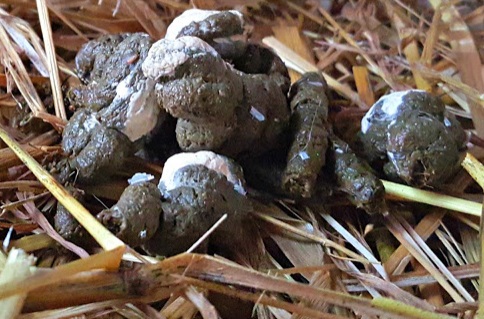
It is a common belief that the poop or feces of a healthy chicken should have an ash color, be firm and with a white cap. While this is true, the poop of a healthy chicken is not always like that as diet, season, climate and state of health can alter the look, texture or color of the chicken’s poop. However, the change shouldn’t last for a long time. If it does, something is wrong with such chicken(s).
2. Green Poop
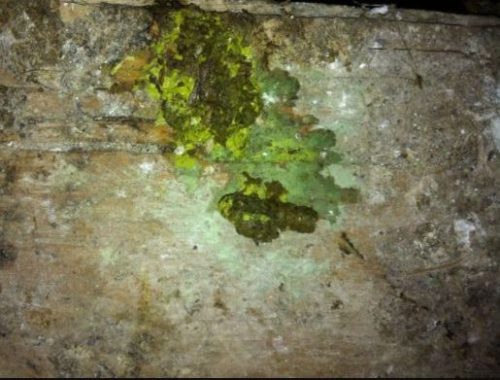
Possible causes: Loss of appetite, starvation, intestinal worms, Marek’s disease, Newcastle disease, Avian flu, salmonellosis. The most reasonable cause is when the chickens consume green vegetables, grasses or herbs.
3. Brown Poop
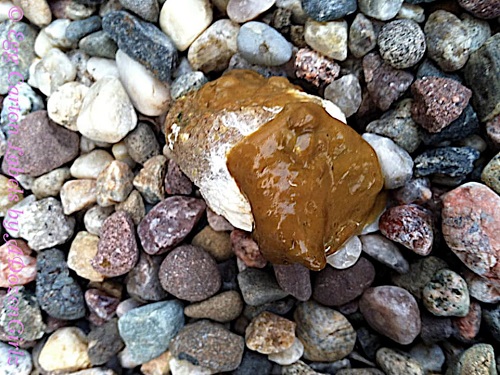
Possible cause: Lead poisoning, Colibacillosis (E. coli) or Infectious Bronchitis
Most likely causes: Ingestion of foods with higher liquid content, so the consistency of the poop will look more like pudding and this can occur once with a frequency of 7-8 normal poops, which is quite normal.
4. Yellow and Foamy Poop
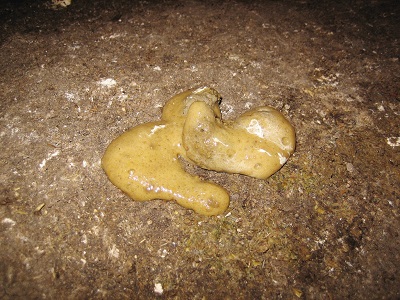
This could be an indication of an intestinal worm, coccidiosis, or salmonellosis (Fowl typhoid). Other causes could be the intake of some foods, strawberries or tomatoes, oats and corn.
5. Red or Bloody Poop
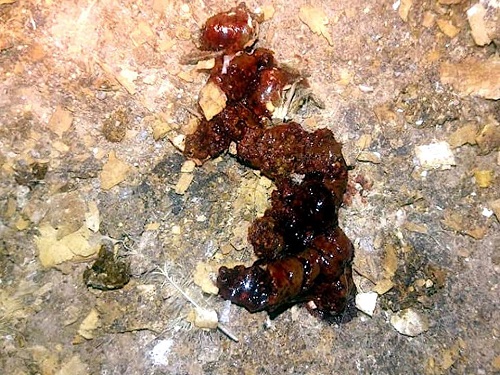
Possible cause: Advanced coccidiosis, intestinal wall shedding or intestinal parasites.
Probable cause: Swelling or inflammation of the intestinal wall. The orange particles are sometimes mistaken for blood, apple intake, or excess oatmeal.
Fresh blood in the poop or dark brown-black or reddish-black poop, indicating that the blood has been digested, could be a symptom of enteritis, septicemia, poisoning, or parasites.
6. White or Milky Poop
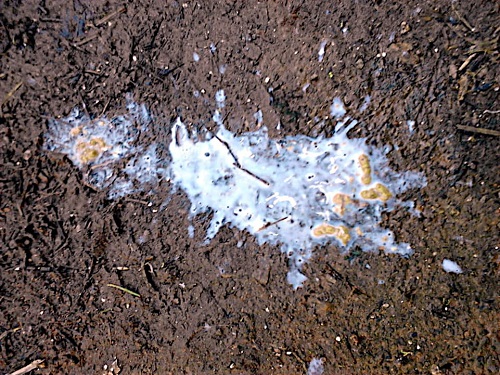
Possible causes: Food digestion problems, bacterial diseases (Bacillary white diarrhea), stress, coccidiosis, fungal or viral infections.
Probable cause: Bacillary White diarrhea (Pullorum), Infectious Bursal Disease (Gumboro) or Coccidiosis
7. Black Poop
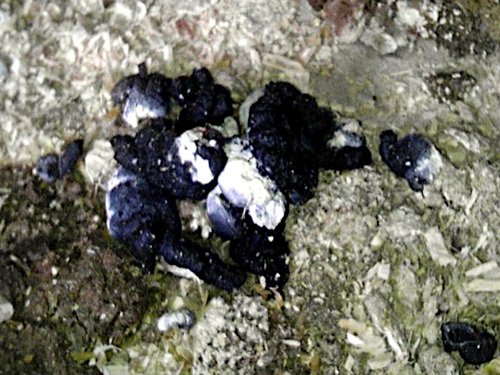
It indicates bleeding in the upper parts of the digestive system, caused by blood that has fallen into the digestive tract, the cause may be the presence of worms or tapeworms or even very thin bacterial infections, also due to the ingestion of ash or charcoal.
Lumpy or undigested: The frequency will be the first indication that something is wrong. Incomplete digestion, foods that are too hard to digest (e.g. corn), or stunting syndrome.
Undigested seeds in feces: May be caused by roundworms or a Candida Albicans (fungus) Moniliosis infection
Bulky poop: Mycosis or bacterial infection. Poop is normal in broody hens.
Chicken Poop Chart PDF
Download the Chicken Poop Chart PDF here
Wrapping Up
Once you have a good idea of what is causing your birds to be sick through the poop, you need to start treatment. In some cases, this is as simple as adjusting their diet or feed. However, it is always good to consult your poultry vet before taking action.
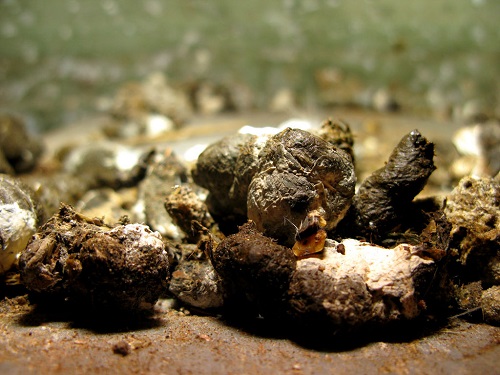
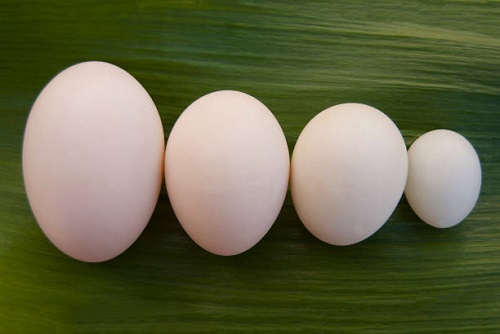
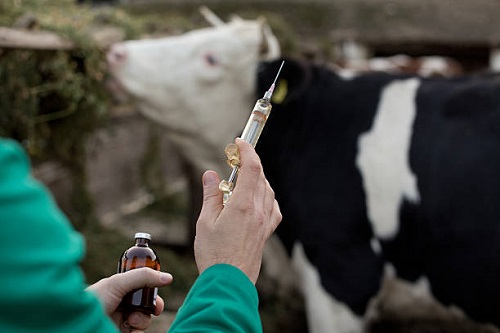
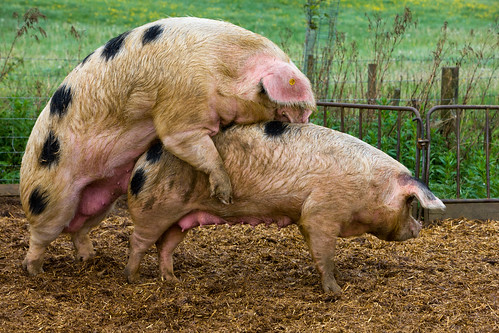
Thank you for this wonderful article. I’m glad to have come across it. It is indeed very helpful for someone interested in poultry farming like me.
I have a pet Tom Turkey that free ranges in my urban backyard. His appetite is good and he is behaving normal. But he has had at least 2 very runny brown poops in the last 30 hours.
Besides his free range food, he eats a layer hen chicken feed. The only change in his diet (that I know of, he does interact with neighbors through a chain link fence) has been a handful of red grapes that I shared with him about 40 hours ago. Should I be concerned? Is there anything else that I should watch for, or do for him? I raised him from age 3 days old and I love this turkey very much. It is very important to me, that he has a long healthy happy life.